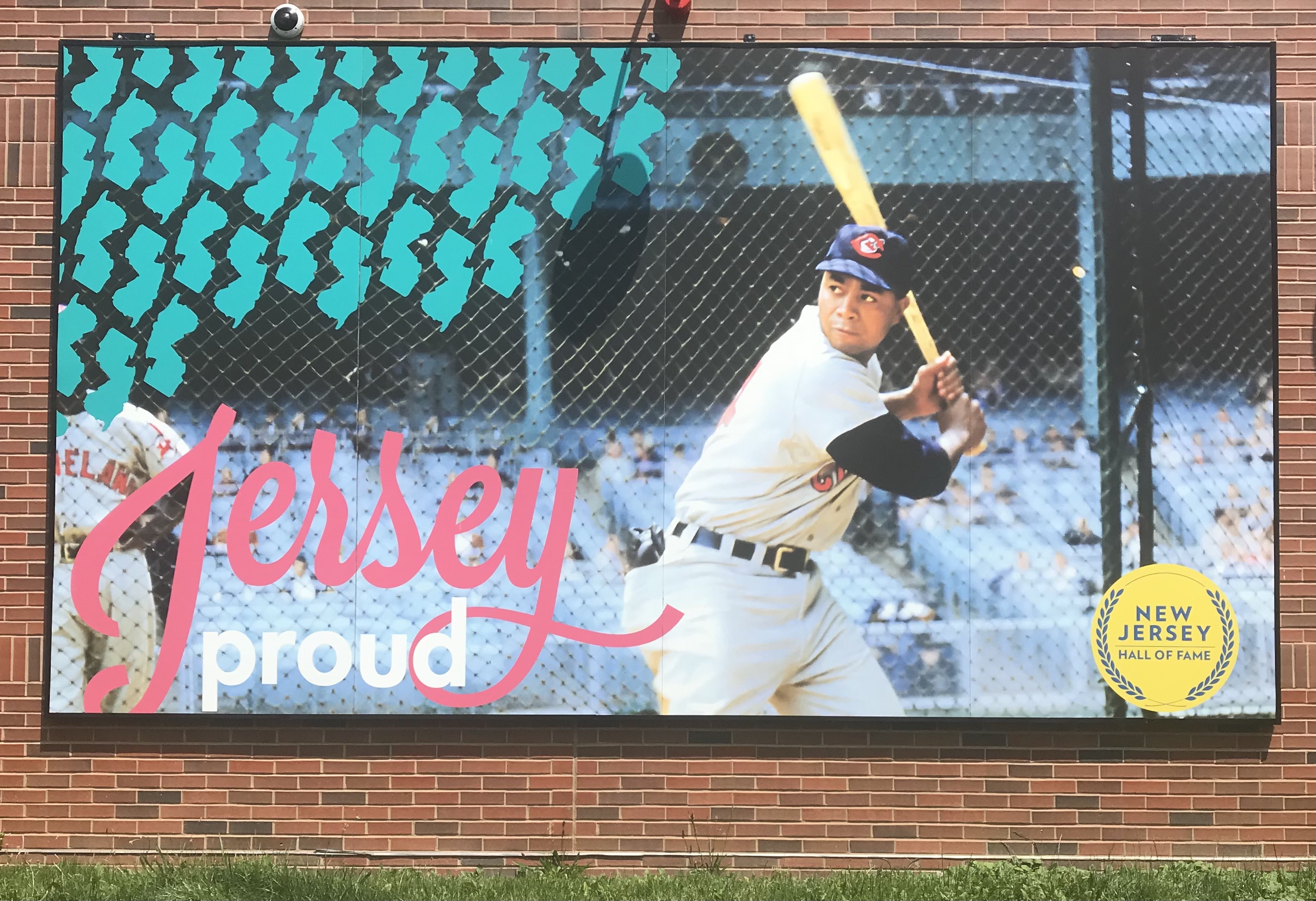The 5 Must-See Artifacts at Muth Museum

The Charles M. Muth Museum is one of the coolest places at Hinchliffe Stadium.
That statement can be interpreted literally, since the Muth Museum has air conditioning to shield fans on hot, sunny days. But it also has an incredible view of the baseball field and Great Falls, while also taking history lovers and baseball fans back in time.
The museum is a combination history of Paterson greatness and the Negro Leagues, delivering interesting facts and artifacts about the 90-plus-year-old stadium. It is operated by Montclair State University and is constantly updating its collection of artifacts.
Still, there are some especially interesting antiques at the Muth Museum. Here are the five must-see items at the museum, chosen by director Jessica Bush.

The Knot Hole Gang Pin
The pin is a new addition to the museum, and Bush was ecstatic to get her hands on this one-of-a-kind item that served as a membership authorization for the Knot Hole Gang, which began service at Hinchliffe in 1937.
Any Paterson-area boys aged 7-15 who vowed to abide by the Knot Hole Gang’s rules of fair play and good sportsmanship could receive a pin, which granted access to to Negro League games at Hinchiliffe for just $0.10.

Horacio Martinez Pin
Martinez was a fixture at Hinchliffe over his 10-season career for the New York Cubans. He may have been a light-hitting middle infielder — he only had three home runs and finished with a .576 career OPS — but was a defensive wiz, which is how he ended up as a five-time Negro League all-star and a member of the Negro League champion Cubans in 1947.
There is a section in the museum dedicated to Martinez, which includes a Cubans jersey and bat as well as a signed picture. But Bush specifically wanted to highlight the pin attached to his signed picture, which was recovered from his home in the Dominican Republic and sent to the museum.

John Briggs Corner
Briggs is arguably on the Mount Rushmore of pro athletes to hail from Paterson, and unsurprisingly, Muth Museum celebrates Paterson’s native son.
Briggs spent 11 major-league seasons playing for the Philadelphia Phillies, Milwaukee Brewers and Minnesota Twins, amassing 1,041 hits, 139 home runs and a .771 career OPS from 1964-75. But before that, Briggs was an All-State athlete in baseball, basketball and football at Eastside High School then played college baseball at Seton Hall.
Briggs has never left Paterson and has continued to support the city and Hinchliffe Stadium. Museum goers can learn more about Briggs and check out his Brewers jersey and his game-used bat.
Gaetano Federici Plaques
Federici was a Paterson sculptor, and he produced a pair of plaques that celebrate Eleanor Egg and Albert Vande Weghe, two legendary athletes and Paterson natives.
Eleanor Kratiger, known as Eleanor Egg, was known as the world’s fastest woman in the early 1930s after she claimed the 100-meter-dash record at the national AAU championships. She started her track career as a member of the Paterson rec program and also held the women’s broad jump world record.
Vande Weghe, who attended Central High School in Paterson before going to college at Princeton, was a world-class swimmer who won a silver medal at the 1936 Berlin Olympics. Vande Weghe is also considered the inventor of the flip turn, which is now the standard by which swimmers turn in the pool, and was inducted into the International Swimming Hall of Fame in 1990.


Midget Car
Yes, that’s right. There’s a car in the museum, which pays homage to the history of car racing both in Paterson and at Hinchliffe Stadium.
Hinchliffe hosted midget car races from 1934-50, capitalizing on Paterson’s automobile popularity gained from the city’s Gasoline Alley in the 1920s. Gasoline Alley featured several auto-body shops where drivers could refine and perfect their cars and led to a surge of car- and motorcycle-racing fans in Paterson.
Famous racers like Ted Horn, Bill Schndler, Roscoe “Pappy” Hough and Rex Records all tried their hand at racing inside Hinchliffe Stadium.

Latest Articles
Get Updates about all the latest Games & Events








